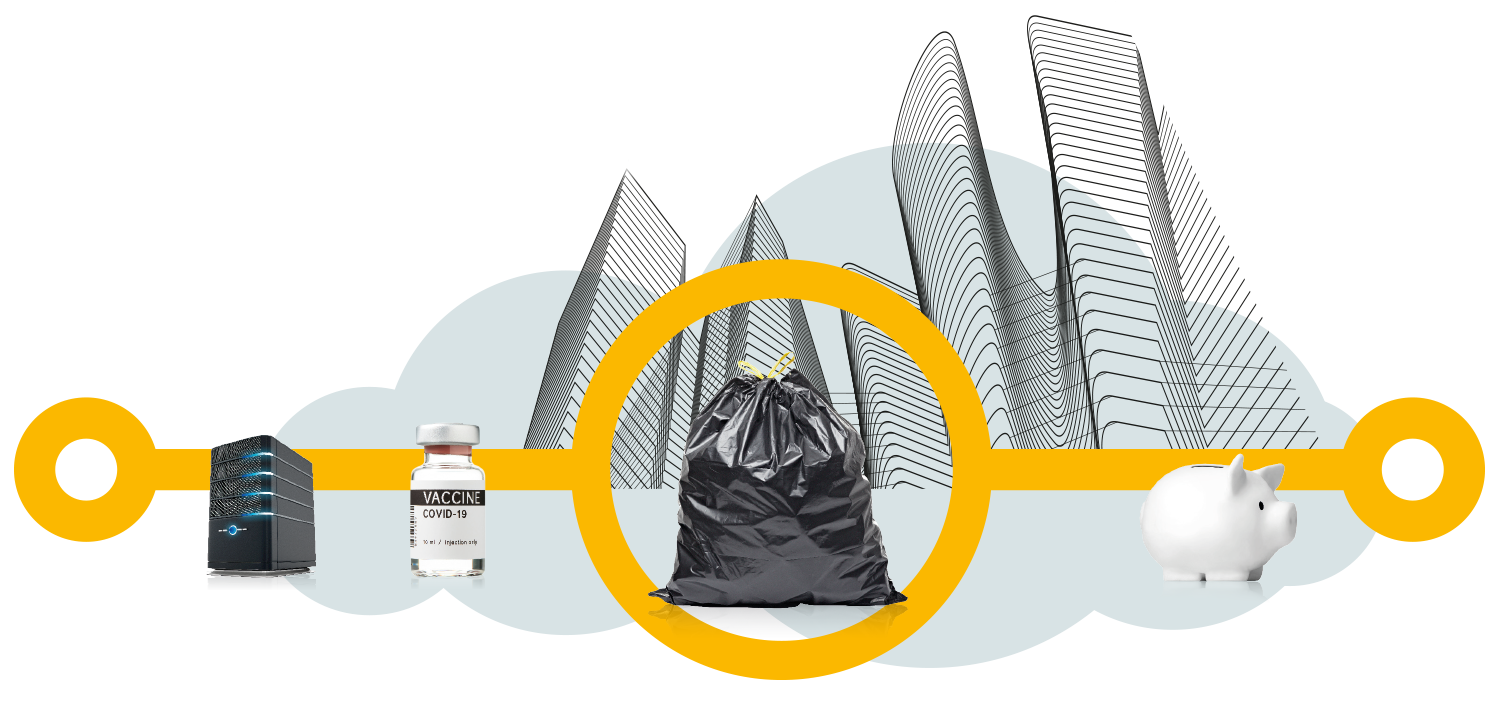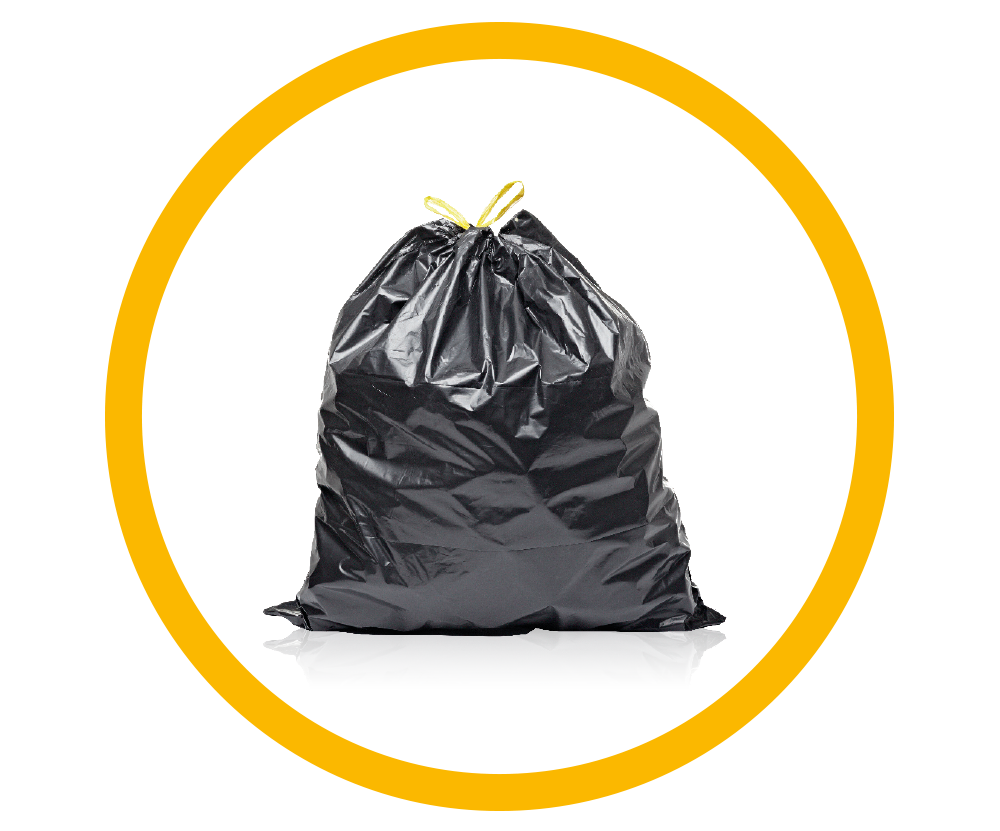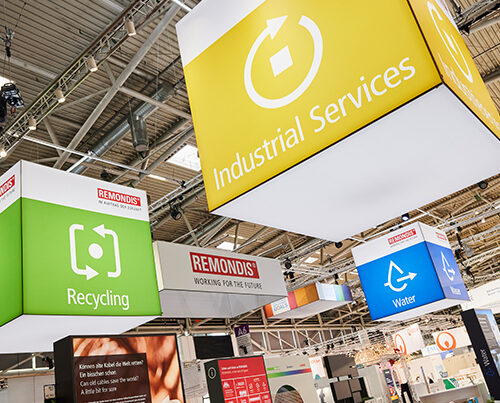Leaving waste and overflowing bins in the streets of densely populated towns for a few extra days after they should have been collected. This was one of the most effective measures that used to be used in industrial disputes – how can we forget those images from London, Paris, Madrid and Naples. Life cannot function properly without a well-established waste management sector as unemptied bins can cause considerable hygiene and health problems for local residents. Which is why the waste management sector considers itself to be a part of the so-called Critical Infrastructure. According to the most commonly found definitions, this term covers sectors such as energy, water supply and wastewater treatment.

A forever changing definition
This term has, in fact, not been around for that long. The phrase was first coined in the USA during the 1990s and initially focused on the world of digitisation. At that time, those responsible in the worlds of politics and business were well aware that, while digitisation would get many things moving, the IT systems crashing would also mean having to manage much higher risks than before. Which was why the risk analyses and resulting security concepts were initially set up to protect the IT infrastructure of companies, authorities and councils.
With an eye to the ‘National Strategy to Protect Critical Infrastructure’, which transposed an EU directive into national law and came into force in Germany in 2009, the BMI [Federal Ministry of the Interior] expressly refers to the ‘National Plan to Protect Information Infrastructure’. Other events – from epidemics, to natural disasters, to war – can obviously impact on the ability of the Critical Infrastructure to function effectively as well.
While the central and state governments have always considered water supply and wastewater treatment to be a part of the Critical Infrastructure, the ‘kerbside collection of household waste’ was not added to the list of Critical Infrastructure sectors until 2021 when it was listed in the IT Security Act 2.0. Indeed, this addition was so new that industry representatives had to remind the Federal Government’s Covid Committee of the fact at the end of 2021 after it omitted the sector in its recommendations.
Over the last two years, the disruptions caused by the Covid-19 pandemic to, for example, our healthcare systems and global supply chains have made it very clear how the lives of local residents are not hanging by one thread but by a whole host of threads that are not as strong as we had assumed back when life was ‘normal’.
The kerbside collection of household waste was not added to the list of Critical
Infrastructure sectors until 2021 when it was listed in the IT Security Act 2.0.
A look in the rear view mirror
In reality, though, the Critical Infrastructure has been around for much longer than the actual term. Over the centuries, technical progress, the ever-developing division of labour, urbanisation and population growth have all made us dependent on our fellow human beings. It is virtually impossible for someone to survive on their own – especially with the quality of life we have become accustomed to. But how reliable are our neighbours? For years now, the doubt in people’s minds has led to some common practices such as stockpiling goods. External factors can also put us at risk. This can be seen simply by looking back at the past. At the same time, it explains why waste management and wastewater treatment are central components of the Critical Infrastructure.

Recycling rather than disposal
It is not possible to determine exactly when humans began to systematically collect and, for the most part, landfill waste materials. There is a simple reason for this: it was standard for communities that had a shortage of materials to repair and reuse practically everything they had – be it wood, bone, glass, metal or animal skins. In the past, tinkers and cobblers mended utensils that were worn out and could no longer be used. Ragmen, who were also organised into a guild like other tradespeople, paid a fee so that they could systematically look through household waste to find valuable materials. Animal bone was boiled to make glue. Urine was collected and used to process leather. Even faeces were collected in the Middle Ages and sold as a fertiliser or fuel. “Turning s**t into gold” really was possible back in the Middle Ages.
Very few materials were sent to rubbish tips at that time. These included sweepings – the smallest volumes of waste from households. For the most part, towns buried these in ditches with other materials that could not be reused, one of the most productive sites for archaeologists nowadays. Indeed, a few towns back in the Middle Ages even began collecting the material and taking it outside the city walls to prevent it from being left next to the front door, blocking the roads and causing accidents.
Hygiene pretty much took a back seat at that time.
A changing attitude towards waste
Waste only really became a challenge in recent history. Why? Because of the ever-growing volumes. As the size of the population in cities grew, so, too, did the amount of fly-tipping – causing a real problem for the authorities. A number of factors were driving this development. Technical progress meant that previous recycling processes were no longer profitable. Coal took over a central role in energy production. The centuries-old practice of collecting wood and paper as fuel was suddenly obsolete. And cheaper, man-made raw materials such as fertiliser had a similar impact.
Our cultural and social attitude towards our ‘leftovers’ has also changed. While there was still a pretty relaxed attitude towards many parts of our lives in the Middle Ages, there was a much greater sense of shame later on – particularly after the Reformation – and a desire for privacy and seclusion, especially as a family unit. We no longer wanted to have to think about our waste: “take it away as far as possible” became the overriding standpoint.
Cleanliness became a subject in itself in absolutist states and as part of the Enlightenment movement and a topic that people felt they had to teach to the uneducated classes. Anyone carrying out a waste-related profession found themselves being stigmatised and sidelined as if they were responsible for the dirt. Authorities began using cleanliness as a reason to discipline and monitor their own people. This was reflected in urban development in the 19th Century. As the cities rapidly expanded, places had to be built to accommodate the workers coming in from rural areas. The lower the position a person had in society, the closer their home was to the municipal waste ditches and septic drainage fields.

Hygiene as a principle
People gradually began to realise that waste was not harmless but could contaminate the air, water and soil and create a major health risk for the city dwellers. This was first expressed in the so-called miasma theory of the 17th and 18th centuries, which suspected that there was a connection between the two. As people had no proof of this, however, they primarily focused on outer appearances. It was simply assumed that if something smelt bad or looked dirty then it was not good for humans. The invisible elements, i.e. bacteria and viruses, and their effect on humans did not come to the fore until the field of bacteriology emerged. The whole idea and the importance of hygiene grew quickly after the beginning of the 19th Century. And now it is clear that waste is dangerous and must be handled with care.
The development that this triggered, though, was highly problematic to begin with. The previous recycling infrastructure and its representatives, the relevant professions, had completely disappeared by the end of the 19th Century. The volumes of waste being generated in the 20th Century were growing at a very rapid rate and the new structures being set up were unable to keep up with this development. By the end of the 19th Century, it had become a standard task for local authorities to remove waste from their towns. But what should they do with it then?
Heated arguments were exchanged about this problem during the first three decades of the 20th Century. Those who supported the reuse of the materials considered landfilling and incineration to be an ‘environmental outrage’. Individual efforts – such as Munich’s attempt at the turn of the century to sort household waste after it had been collected so materials could be reused or Kiel’s bid to process human waste into fertiliser – failed in the end for financial reasons and hygiene concerns.
Hygiene is the main reason why the people on the other side of the argument were in
favour of incineration as this process enables the materials to be completely destroyed. However, the incineration systems used at the time – or at least those used in Germany – did not function very well as there was not enough combustible material in the waste, particularly during the war years. In the end, the decision was made for landfilling, something neither side really wanted. With there being no system organising the way the materials were landfilled, this development had a huge impact on the local environments.
The first signs of a circular economy could be seen in Germany after the Second World War when the country enjoyed rapid economic growth, the so-called ‘Wirtschaftswunder’, and there was a surge in the volumes of waste. Not until the 1960s, when the emergency could no longer be hidden and landfills were filling up faster than new space could be found, were the first steps taken to systematically collect and process waste – the recycling sector had begun. Looking back over the centuries, neither waste management nor wastewater treatment began simply as a matter of course. They were a response to the essential necessities of human beings living on a highly developed, densely populated planet characterised by division of labour. They fulfil tasks, without which life – and in particular urban life – would simply not be possible. And they require many different players and processes that must be able to interact with each other sensibly and smoothly so that they can function properly.

Wastewater treatment
A separate subject – but one that is still closely connected to waste management – is the field of wastewater treatment. Archaeological digs have shown that sewage systems were built in the Bronze Age in Sumerian towns, more than 4,500 years ago, to remove human waste from populated areas by using water to transport the material to suitable rivers or streams. Comparable systems were built and used throughout the whole of the Ancient and Roman Times.
This knowledge then got lost. Or rather changing political environments, a lack of economic opportunities and new religious beliefs led to some people leaving the cities and the systems no longer being operated. Within a few generations, no one knew about this solution.
Instead, in the Middle Ages and the Early Modern Age, human waste simply ended up outside the front doors, in pits or in the nearest stream. People gradually became bothered by the way this contaminated their local environment, especially with the dawn of the Modern Age. Authoritarian methods were turned to, to begin with, to try and handle the smell and filth. A series of cholera epidemics in the 19th Century and the realisation that these were primarily caused by human waste led to some large cities building extensive sewer systems in the second half of the 19th Century. Not until the 20th Century were sewer systems found across all cities.
The practice of simply discharging sewage into the rivers, however, also proved to be a problem. At the end of the day, it is not possible to use contaminated water as drinking water nor can such waters be used for swimming or fishing. Innovative towns began using a natural sewage treatment method: septic drainage fields. This system was very soon stretched to its limits as too much surface area was needed. Over the 20th Century, mechanical, chemical and biological systems were then gradually developed to treat the wastewater – not only so that it could be discharged safely but also so that the recovered products, primarily water, could be reused.
Image credits: image 1: Adobe Stock: yewkeo; image 2: Adobe Stock: Natika, Adobe Stock: chones, REMONDIS, Adobe Stock: Kuzmick, Adobe Stock: esoxx; images 3, 4: Adobe Stock: yewkeo; image 5: Adobe Stock: yewkeo, Adobe Stock: Destina, Adobe Stock: M.Rode-Foto, Adobe Stock: Lumos sp, Adobe Stock: Mateusz; image 6: Adobe Stock: Lumos sp; image 7: Adobe Stock: yewkeo












